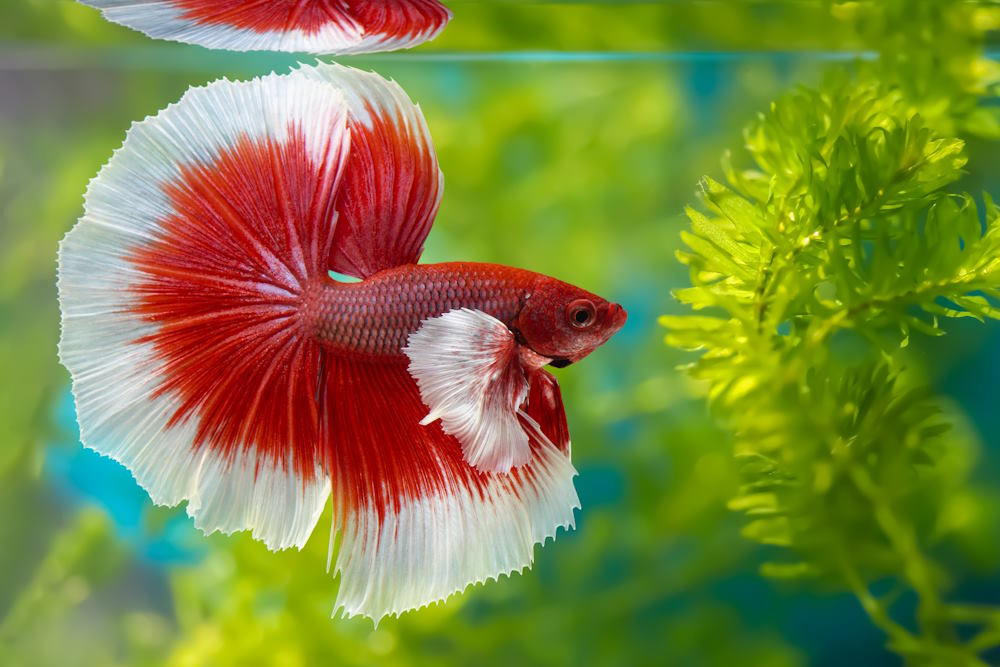Betta Fish Diet Regimen: What to Feed Your Betta for Ideal Wellness
Wiki Article
Reproducing Betta Fish: a Comprehensive Step-By-Step Guide to Efficiently Raising Infant Bettas From Eggs to Their Adult Years
Reproducing Betta fish is a meticulous venture that calls for mindful planning and implementation to guarantee the effective advancement of fry from eggs to grow fish. As the male Betta faithfully constructs a bubble nest and guards the priceless eggs, the subsequent stages of care and change demand attention to information and understanding of best practices.
Picking Reproduction Pairs
When beginning on the journey of breeding Betta fish, selecting the appropriate reproduction sets is vital to achieving desirable characteristics and a healthy family tree - betta fish. The primary step in this procedure is to determine the particular attributes you want to boost or protect, such as color, fin kind, and physique. It is necessary to choose genetically diverse pairs to stay clear of inbreeding, which can cause health issues and undesirable featuresAssess potential reproducing prospects thoroughly. A healthy and balanced male Betta must show vivid colors, an active disposition, and well-formed fins, while the lady needs to additionally present vivid coloration and a rounded stubborn belly, indicating readiness for spawning. Observing the personality of both fish is essential, as aggressive or excessively timid people may not reproduce efficiently.
Keeping records of the parent fish's ancestry can assist you track genetic qualities and prospective issues. Ultimately, investing time in the choice procedure will considerably enhance the probability of producing solid, dynamic offspring that meet your reproduction objectives.

Preparing the Breeding Container
Producing an optimal breeding setting is an essential action after choosing ideal sets for Betta fish. The breeding tank ought to be particularly created to give comfort and stimulate the natural breeding actions of the fish. Beginning with a tank dimension of at the very least 10 gallons to ensure sufficient area for both the male and women Bettas.Maintain a mild filtering system to maintain the water clean while staying clear of strong currents that can emphasize the fish. In addition, an air stone can be included in offer oxygenation without interrupting the water surface excessive.
Temperature regulation is critical; objective for a steady array of 78-82 ° F(25-28 ° C) making use of a reputable heating system. The pH degree should be maintained between 6.5 and 7.5, and routine water adjustments are necessary to ensure high water high quality.
Include floating plants or spawning sponges to produce concealing places for the female, while additionally motivating bubble nest building by the male - betta fish. Ensure the tank is free from sharp decors and any kind of possible risks, as the welfare of the fish should always be focused on throughout this essential stage of reproduction.
The Breeding Process
Commonly, the breeding procedure for Betta fish entails a series of distinctive and evident behaviors that indicate readiness for recreation. The male Betta starts by constructing a bubble nest at the water's surface area, which serves as a website for the fed eggs. This nest is critical, as it gives a safe atmosphere for the eggs up until they hatch.Once the nest is developed, the man will display courtship habits, such as flaring his fins and exhibiting lively shades to draw in the female. The female, upon sensing the man's preparedness, will react by showing upright red stripes along her body, signifying her receptiveness.
When the women techniques, the male engages in a mating dancing, often causing an accept called the "spawning." During this embrace, the woman releases her eggs, which the male feeds instantly. The fertilized eggs after that are up to the bubble nest, where the male carefully collects and returns them to the nest. Following this, the male assumes obligation for safeguarding the nest and ensuring the security of the eggs till they hatch, commonly within 24-36 hours. This stage is crucial in the breeding procedure, laying the foundation for effective fry development.
Caring for Betta Fry
Caring for Betta fry requires mindful focus to their environment and nutrition to make sure healthy and balanced growth and development. After hatching, Betta fry are extremely this post small and prone, requiring a secure and tidy environment.Feeding Betta fry is just as essential. Feed them little amounts numerous times a day, being mindful not to overfeed, which can lead to water high quality concerns.
Transitioning to Adult Bettas
As Betta fry mature, transitioning them to grown-up Bettas is an important stage that calls for careful management of their setting and social communications. This procedure usually begins Resources when the fry reach around 6 weeks of age, at which factor they can be progressively introduced to a much more organized living setting.To promote this shift, it is important to guarantee that the water specifications-- such as temperature, pH, and ammonia levels-- are optimum and stable. Adult Betta fish prosper in warm water (around 78-80 ° F) with a pH of 6.5 to 7.5. Slowly adapt the fry to these conditions to decrease anxiety.
Social communications are another crucial element; male Bettas are notoriously territorial and hostile. For that reason, it is a good idea to different males right into individual storage tanks as they mature. Female Bettas can be housed with each other, however treatment must be taken to keep an eye on for indicators of aggression.
In addition, dietary modifications must be made as the fry expand. Include top quality pellets and live foods to support their growth and health. By taking care of these aspects efficiently, you can advertise an effective transition to the adult years for your Betta fish.

Final Thought
Effective breeding of Betta pop over to these guys fish needs careful focus to detail throughout the whole procedure, from picking genetically diverse pairs to offering optimal treatment for fry. Furthermore, a well balanced diet regimen and gradual adaptation to grown-up environments are important for the growth and development of Betta fish.Report this wiki page